Why you can trust Tom's Hardware
To read about our monitor tests in-depth, please check out Display Testing Explained: How We Test PC Monitors. We cover brightness and contrast testing on page two.
Uncalibrated – Maximum Backlight Level
We chose the fastest QHD screens in our database to compare the PD27’s performance. 240 Hz is rare at this resolution but the Samsung C32G75T is a recent example. At 170 Hz is the Gigabyte M27Q. The final three, Dell’s S2721DGF, Pixio’s PX277 Prime and Gigabyte’s G27QC, run at 165 Hz.
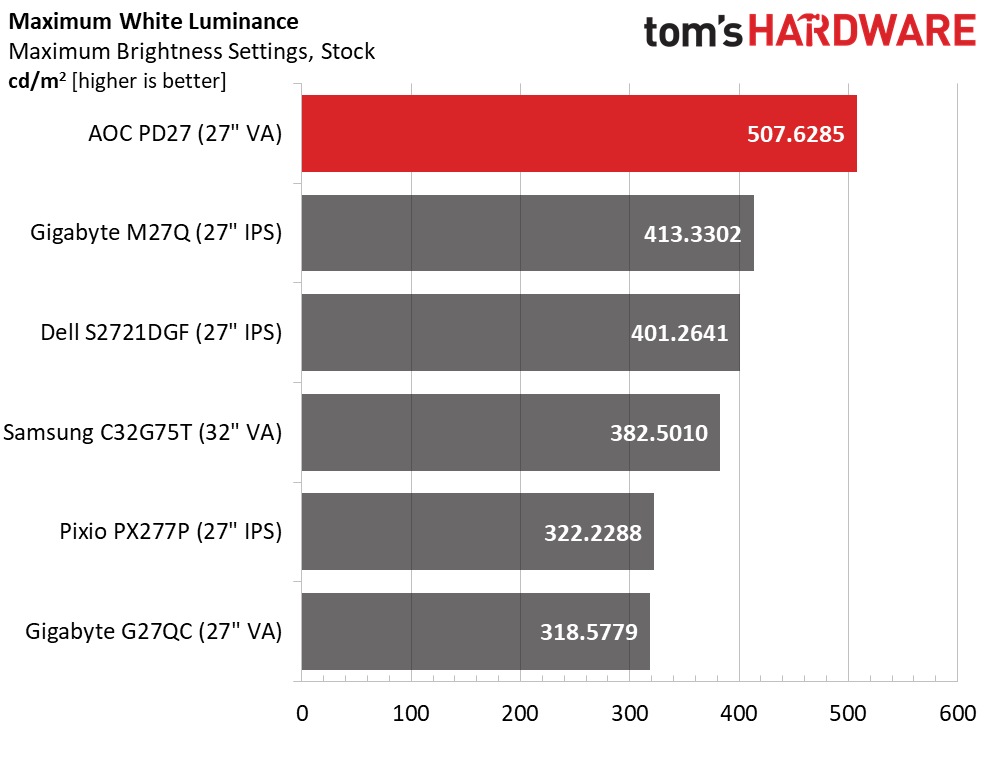
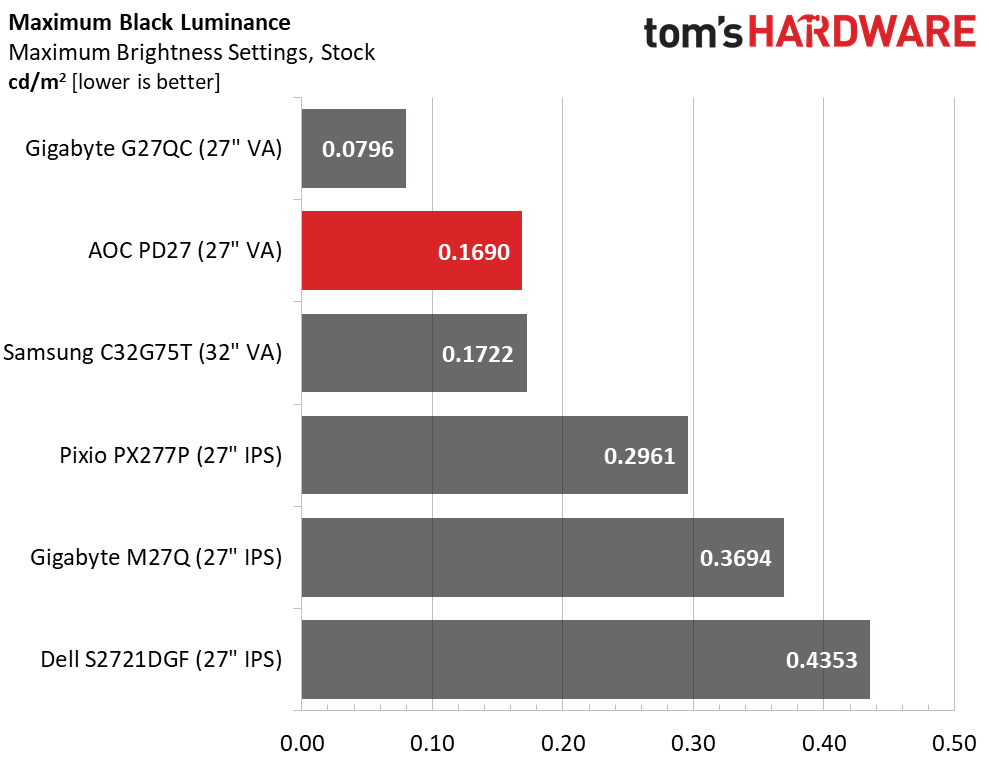
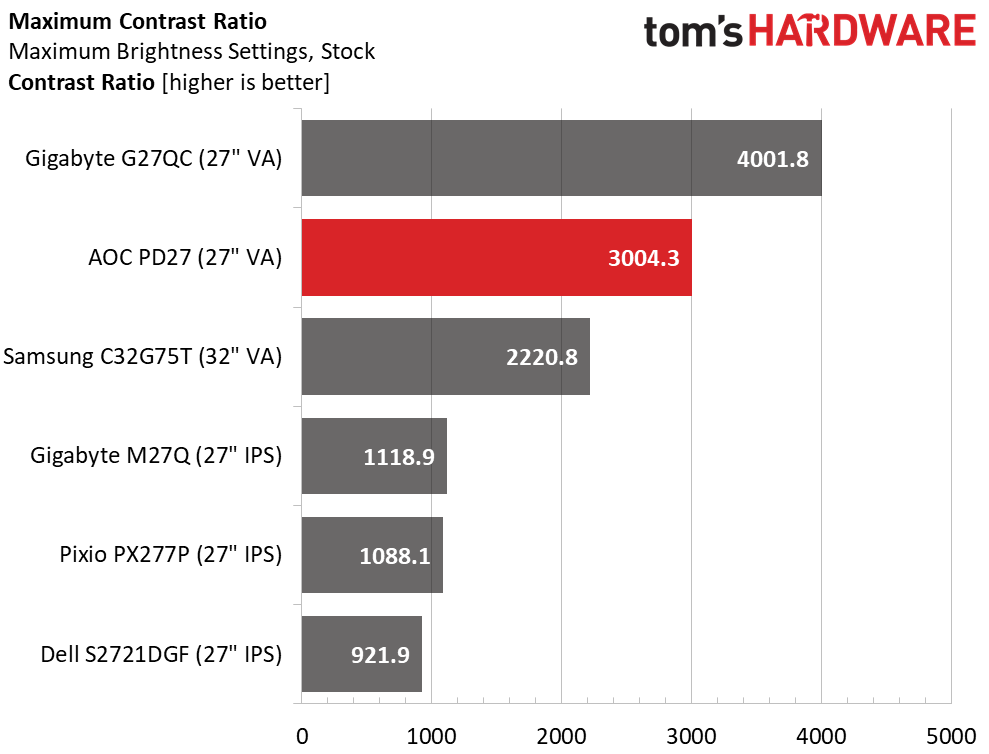
The PD27 manages to exceed its DisplayHDR 400 spec in SDR mode too with over 500 nits of peak brightness. This much light output isn’t necessary for indoor environments and in this case, it raises the minimum level to 89 nits, too bright for dark room play. We’d rather see a 400-nit SDR peak with a minimum around 50 nits. But there is no shortage of contrast. The VA panels here offer low black levels and the PD27 takes a solid second place with just over 3,000:1.
After Calibration to 200 nits
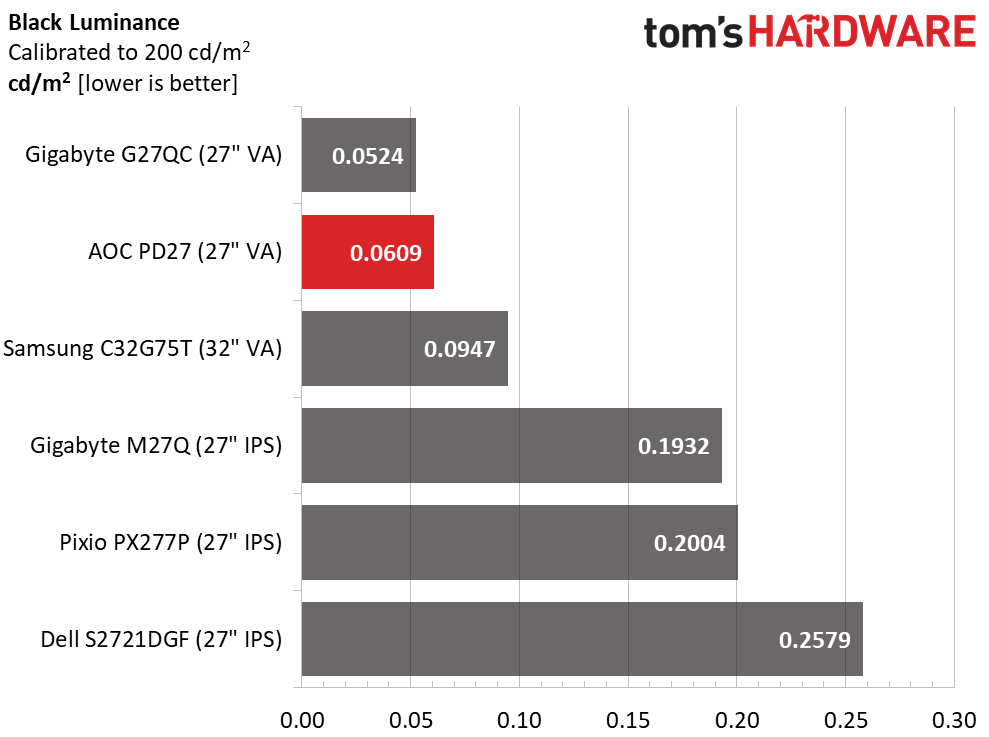
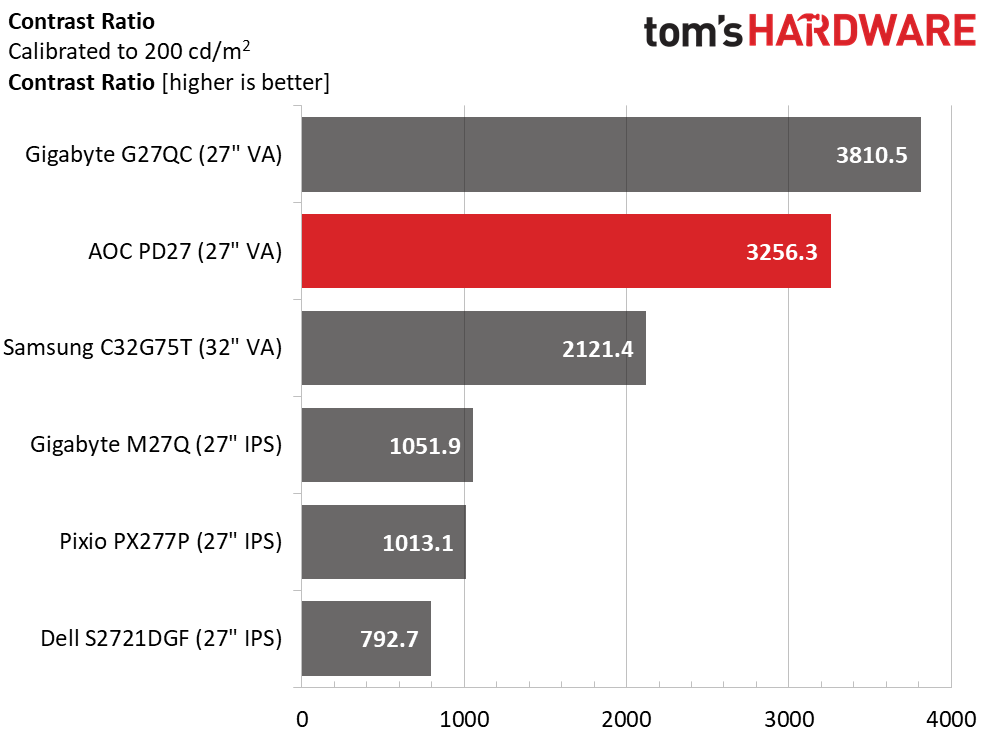
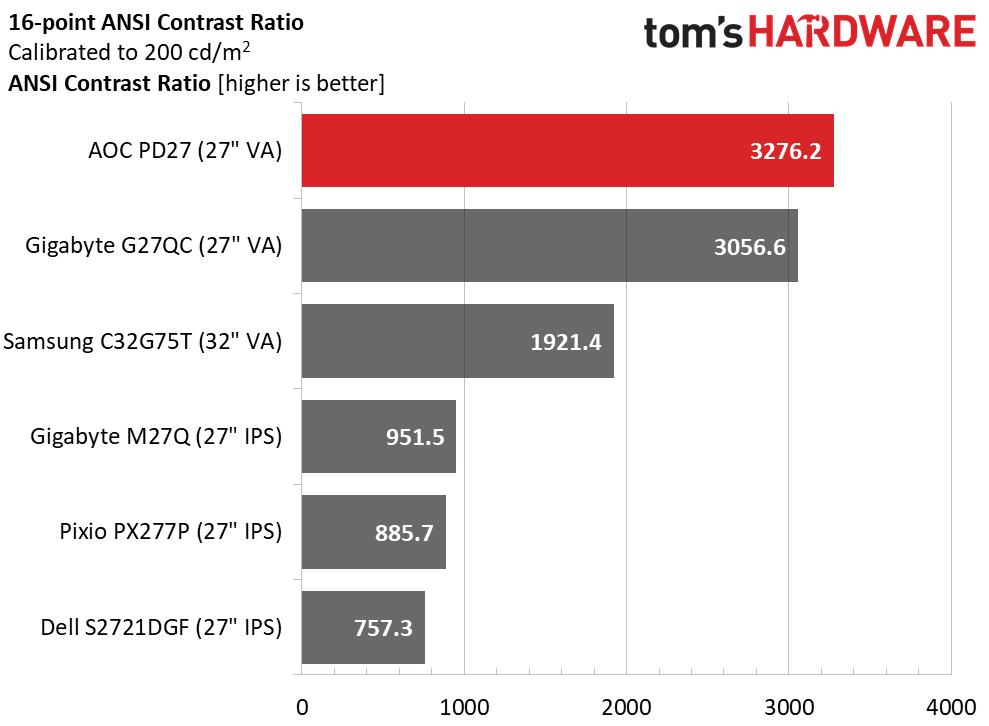
The Gigabyte G27QC maintains its lead in the black level and contrast contest after calibration, but the PD27 is still well ahead of the other screens. The image quality here is truly stunning with deep and richly detailed shadow areas that render down to true black. Bright highlights combine to create a palpable 3D effect and high sharpness.
The PD27 maintains its broad dynamic range in the ANSI test where it takes first place from the G27QC. This is an expensive display to be sure but there is no lack of quality anywhere. Only a first-rate panel will maintain such a high ratio in both the static and ANSI contrast benchmarks. This is excellent performance.
Get Tom's Hardware's best news and in-depth reviews, straight to your inbox.
Current page: Brightness & Contrast
Prev Page Features and Specifications Next Page Grayscale, Gamma & Color
Christian Eberle is a Contributing Editor for Tom's Hardware US. He's a veteran reviewer of A/V equipment, specializing in monitors. Christian began his obsession with tech when he built his first PC in 1991, a 286 running DOS 3.0 at a blazing 12MHz. In 2006, he undertook training from the Imaging Science Foundation in video calibration and testing and thus started a passion for precise imaging that persists to this day. He is also a professional musician with a degree from the New England Conservatory as a classical bassoonist which he used to good effect as a performer with the West Point Army Band from 1987 to 2013. He enjoys watching movies and listening to high-end audio in his custom-built home theater and can be seen riding trails near his home on a race-ready ICE VTX recumbent trike. Christian enjoys the endless summer in Florida where he lives with his wife and Chihuahua and plays with orchestras around the state.
-
Dantte So the very end of the read the author compares the Argon to the Samsung G7 32" "with similar specs".... Why not compare it to the G7 27" with all the same specs except 1; the G7 27" is rated at HDR600, not HDR400? So for the same price and maybe cheaper, you can get the EXACT SAME panel from Samsung with BETTER backlighting!Reply
Which brings me to; why havent any of the Samsung Odyssey panels been tested by Toms; they been available since early Fall and only now is the competition finally coming out with their own products? -
Sleepy_Hollowed ReplyDantte said:So the very end of the read the author compares the Argon to the Samsung G7 32" "with similar specs".... Why not compare it to the G7 27" with all the same specs except 1; the G7 27" is rated at HDR600, not HDR400? So for the same price and maybe cheaper, you can get the EXACT SAME panel from Samsung with BETTER backlighting!
Which brings me to; why havent any of the Samsung Odyssey panels been tested by Toms; they been available since early Fall and only now is the competition finally coming out with their own products?
The extra brightness is not necessarily a good thing for some people (like me), and though I’m a niche, the panel you refer to has a nasty blue light on the back. -
emgarf Some may call that stand "stylish", but on my desk it would just be in the way. The pedestal stand on my Dell U3818DW is rock-solid and takes up much less space.Reply -
Dantte Reply
You can lower the brightness to your liking, and the "nasty blue light" on the back you can turn off. So you dont prefer the G7 over this because you'll have to make an adjustment that takes 10secs? You would rather spend $100 more for an inferior display because 10secs to adjust it to your needs is too much?Sleepy_Hollowed said:The extra brightness is not necessarily a good thing for some people (like me), and though I’m a niche, the panel you refer to has a nasty blue light on the back.